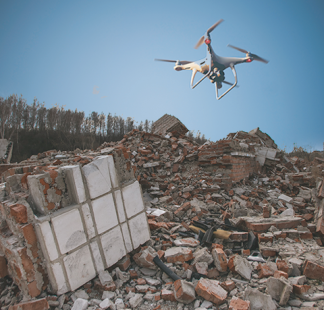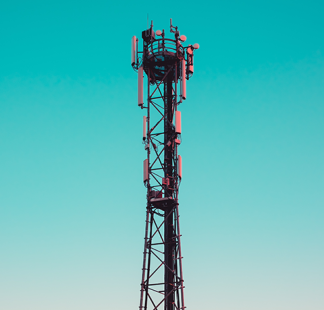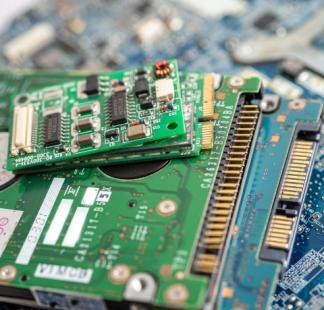- Sylwester Laskowski
- Toni Janevski
Intermediate
- Bank transfer
Description
This course will focus on 5G-Advanced Mobile Broadband and Future Services, including technologies, regulation and business aspects. It will cover mobile broadband evolution, from IMT-Advanced (4G) to IMT-2020 (5G) and IMT-2030 (6G).
The course will include 5G New Radio (NR) and 5G Core Network with 5G-Advanced enhancements. Further, it will focus on 5G/5G-Advanced services including enhanced mobile broadband (eMBB), massive IoT (mMTC), critical IoT (URLLC), and Vehicle-to-everything (V2X), then deployment of 5G/5G-Advanced networks by given QoS/QoE indicators, Integrated Access and Backhaul (IAB), and edge clouds, as well as 5G-Advanced spectrum management and regulation. The course will also include 5G-Advanced enhancements including mobility enhancements, multicast and broadcast evolution, boundless XR (eXtended Reality), RedCap (Reduced Capability) Internet of Things and UAV (Unmanned Aerial Vehicles). It will also include Artificial Intelligence (AI) / Machine Learning (ML) use cases in 5G-Advanced telecom networks, as well as 5G-Advanced NTN (Non-Terrestrial Network) / Satellite networks for future IoT services. Finally the course will cover 5G-Advanced business and regulatory aspects including 5G-Advanced services vs. Internet network neutrality, as well as developments towards future 6G mobile networks and services, IMT-2030 and beyond.
This course is targeted at managers, engineers and employees from regulators, government organizations, telecommunication companies and academia, who are interested in 5G-Advanced Mobile Broadband and Future Services, including technologies, standardization, regulation and content. Other institutions and individuals that are dedicated in building their capacity related to 5G-Advanced Mobile Broadband and Future Services аrе also welcome to participate.
No prior knowledge or qualification is required to register for this course, considering the given target population.
At the end of the training, the participant should have gained an understanding of the key aspects of:
- Mobile broadband evolution: from IMT-Advanced (4G) to IMT-2020 (5G) and IMT-2030 (6G)
- 5G New Radio (NR) and 5G Core Network
- 5G/5G-Advanced services: enhanced mobile broadband (eMBB), massive IoT (mMTC), critical IoT (URLLC), V2X
- Deployment of 5G/5G-Advanced: QoS/QoE, Integrated Access and Backhaul (IAB), edge clouds
- 5G/5G-Advanced spectrum management and regulation
- 5G-Advanced enhancements: optimized XR (eXtended Reality), multicast and broadcast evolution, RedCap IoT
- Artificial Intelligence (AI) / Machine Learning (ML) in 5G-Advanced telecom networks
- 5G-Advanced NTN/Satellite networks and future IoT services
- Business and regulatory aspects of 5G-Advanced including QoS vs. Internet network neutrality
- Future 6G mobile networks and services: IMT-2030 and beyond
This course will be delivered using instructor-led online learning. The course methodology will be as follows:
- Each day from 22 to 29 September 2025 there will be made available two recorded video lectures. In total, there are 10 video lectures during the course.
- Course forum, asynchronous, will be organized based on discussion topics raised by the instructor on a daily basis, from Course Day 1 to Course Day 5, which will cover the course material on the given day. Also, participant responses will be asynchronous, keeping in mind the different time zones and daily commitments of participants from different countries around the world.
- General discussion forum, asynchronous, will be provided for participants to ask their own questions which can be answered by the instructor and other participants.
- Final Quiz test will be assigned on the last day of the course, 29 September 2025.
- All announcements for all events (lectures, quiz and forum) will be given in a timely manner (prior to the event) by the course tutor.
The evaluation of the participants will be based on 60% from the Final Quiz and 40% from the answers given in the course forum on the raised discussion topics on daily basis by the tutor, thus reflecting both the quantity and the quality of time spent on the course.
Participation in the course forum is mandatory in order to access the Final Quiz.
The Final Quiz will be open from 00:00 hours on Monday (29 September 2025) according to the GMT+1 time, and will remain open for 30 hours after opening, so each participant can choose the most convenient time to solve it. However, after the start of the attempt the Quiz should be completed in 90 minutes. The Final Quiz contributes with 60% in the total grade.
The course is completed successfully with a total grade of 70% or higher. The grading will be completed by the course tutor after the course is fully completed.
Each fully registered participant who successfully completes the course with a total grade of 70% or higher will receive an ITU Certificate for this course.
The ITU certificates will be given to participants via the ITU Academy platform after completion of the course reporting and processing within the ITU.
Lecture 1. Mobile broadband evolution to 5G/5G-Advanced & Lecture 2. 5G New Radio (NR) and 5G Core Network
Outline, discuss, use, analyze, design and evaluate the following topics using technical, business and regulatory aspects:
- Mobile broadband evolution
- Internet/IP technologies evolution
- Internet Protocols (IPv4, IPv6) vs. mobility management
- Convergence of Internet/IP and mobile networks
- Mobile generations: ITU IMT-Advanced (4G), IMT-2020 (5G) towards IMT-2030 (6G)
- 4G/4.9G mobile broadband (LTE/LTE-Advanced-Pro)
- Evolved Packet System (EPS) architecture
- Mobile IoT evolution (EC-GSM, LTE-M, NB-IoT)
- 5G SRIT and 5G RIT
- 5G New Radio (5G NR)
- 5G Carrier Aggregation (CA)
- 4G to 5G transition, LTE-NR Dual-Connectivity (DC)
- 5G-Advanced RAN enhancements
- 5G Core and network functions
- Interworking architecture for 4G and 5G
- Software-Based Architecture (SBA)
- SDN/NFV for 5G/5G-Advanced
- 5G/5G-Advanced network slicing in RAN and core
- Slice capacity exposure
- Business and regulatory aspects for 5G
Lecture 3. 5G/5G-Advanced services: enhanced mobile broadband (eMBB), massive IoT (mMTC), critical IoT (URLLC), V2X & Lecture 4. Deployment of 5G/5G-Advanced: QoS/QoE, Integrated Access and Backhaul (IAB), edge clouds
Outline, discuss, use, analyze, design and evaluate the following topics using technical, business and regulatory aspects:
- New 5G voice services (Voice over NR, EPS Fallback)
- enhanced Mobile Broadband (eMBB) for mobile OTTs
- Fixed-Wireless Access (FWA) architecture and spectrum
- 5G/5G-Advanced FWA services
- New massive MTC/IoT services
- Ultra-Reliable and Low-Latency Communication (URLLC) for Critical IoT services
- Internet of Smart Things with 5G
- Industry 4.0 and smart factories with 5G
- Advanced V2X (Vehicular to Everything) services
- Roaming for V2X, Security for V2X
- Support for UAV (Unmanned Aerial Vehicles)
- Telco grade UAV/drone service
- Integrated Access and Backhaul (IAB) for NR, frequency bands and deployment scenarios
- ITU’s Optical Transport Network (OTN) solution for 5G
- Edge Computing in 5G/5G-Advanced
- 5G/5G-Advanced QoS framework
- NR QoE management and optimizations for diverse services
- QoS/QoE and KPIs for mobile broadband Internet
- Testing Mobile Internet access and QoE aspects
- QoS for URLLC services
- QoS operational strategy for supervision on mobile broadband
Lecture 5. 5G/5G-Advanced spectrum management and regulation & Lecture 6. 5G-Advanced enhanced services: optimized XR (eXtended Reality), multicast and broadcast evolution, RedCap IoT
Outline, discuss, use, analyze, design and evaluate the following topics using technical, business and regulatory aspects:
- ITU’s spectrum management for 5G/5G-Advanced
- 5G/5G-Advanced operating bands
- 5G-Advanced low-, mid- and high-band spectrum by 2030
- Support for NR RedCap in 5G-Advanced
- Dynamic Spectrum Sharing (DSS)
- 5G/5G-Advanced in unlicensed spectrum
- 5G-Advanced spectrum utilization vs. energy efficiency
- Spectrum for 5G/5G-Advanced on planes, Wi-Fi on the road
- Mobile satellite spectrum, NTN spectrum bands
- Support for drones (UAVs)
- Spectrum for 5G/5G-Advanced backhaul
- Spectrum policies vs. investments in 5G/5G-Advanced
- Internet/IP services in 5G-Advanced and beyond
- IPv6-only development for VR, AR, IoT in 5G-Advanced
- 5G Media Streaming (5GMS), VR/AR/XR
- Optimized XR (eXtended Reality) in 5G-Advanced
- Metaverse with 5G-Advanced
- Use cases for Mobile Metaverse: smart transport, immersive gaming and live shows, IMS-based 3D Avatar Call, virtual humans in metaverse
- Evolution of 5G NR multicast and broadcast services (MBS)
- Reduced Capacity (RedCap) NR for IoT services
- Time synchronization in 5G/5G-Advanced
- Enhanced Industrial IoT (IIoT) with 5G-Advanced
Lecture 7. Artificial Intelligence (AI) / Machine Learning (ML) in 5G-Advanced telecom networks & Lecture 8. 5G-Advanced NTN/Satellite networks and future IoT services
Outline, discuss, use, analyze, design and evaluate the following topics using technical, business and regulatory aspects:
- Applications on Machine Learning in different areas of telecoms/ICTs
- Machine Learning vs. Deep Learning
- Framework for Machine Learning (ML) in IMT-2020 by ITU
- Network intelligence levels in IMT-2020
- AI/ML model transfer in 5G/5G-Advanced
- Data handling to enable Machine Learning in IMT-2020 and beyond
- Machine learning marketplace integration in future networks
- ML based end-to-end multi-domain network slice management and orchestration
- AI/ML assisted network slicing management and QoS/QoE support
- AI/ML for mobile metaverse use case of virtual alter ego
- Zero-touch network operations
- AI/ML operations in 5G-Advanced (AI/ML operation splitting, AI/ML model/data distribution and sharing, Distributed/Federated Learning)
- 5G-Advanced and Satellite systems (LEO, MEO, GEO, HAPS)
- 5G NTN Architectures (regenerative payload, transparent payload)
- NTN enhancements in 5G-Advanced
- 5G-Advanced system with Satellite backhaul
- Service continuity between 5G NTN and 5G Terrestrial Networks
- Satellite M2M/IoT services
- 5G NTN IoT services and market
- Network slicing in integrated terrestrial-space communication 2030
Lecture 9. Business and regulatory aspects of 5G-Advanced including QoS vs. Internet network neutrality & Lecture 10. Future 6G mobile networks and services: IMT-2030 and beyond
Outline, discuss, use, analyze, design and evaluate the following topics using technical, business and regulatory aspects:
- 5G-Advanced vs. OTT services and Internet network neutrality
- Dimensions of network neutrality in 5G
- 5G-Advanced non-public (private) networks
- V2X business and regulatory aspects
- Cross-border corridors for 5G-Advanced and beyond
- Business and regulatory aspects of 5G-Advanced Satellites (5G NTN)
- Spectrum regulation for 5G-Advanced and beyond
- Regulatory aspects of AI/ML in 5G-Advanced and beyond
- Business aspects of 5G-Advanced services
- IMT for 2030 and beyond
- Main pillars for 6G
- AI cognitive network for 6G
- eMBB+, URLLC+, mMTC+, V2X+
- Cyber-physical continuum – 6G Internet of Everything
- Holographic communication, Digital twins
- Immersive cloud XR
- 6G support for AI-powered intelligent machines
- 3D global seamless coverage (space-air-ground-sea) – integrated terrestrial and non-terrestrial networks
- Spectrum for 6G
- Business and regulatory views for IMT-2030/6G and beyond












